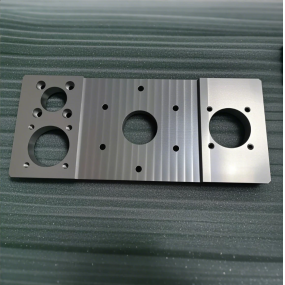How to deal with the unfolding diagram of the cabinet during Sheet Metal Processing? The editor of the sheet metal processing manufacturer will answer your questions.
Before the cabinet is produced, the first thing to do is to design the cabinet production drawings. Only by designing the drawings can the cabinet style that the customer wants be made, and the production department knows how to make the cabinet. Therefore, the cabinet design drawing is an important part of the production of cabinet ZUI. Sheet metal processing cabinets are one of many cabinets, and they also need to design drawings before production. But pay attention to the expansion drawing and floor plan when sheet metal processing is made. Generally speaking, the expansion drawing is a 2D floor plan based on the 3D part drawing.
So, how does precision sheet metal processing handle the unfolding diagram of the cabinet?

1. Generally speaking, the way of sheet metal processing should be reasonable and convenient. This saves material.
2. Rational planning of the gap between parts and the way of hemming, generally speaking, T = 2.0 or less, the gap is 0.2, T = 2-3, the gap is 0.5, and the hemming method uses long sides to wrap short sides (door panels).
3. Reasonably consider the tolerance shape size and hole shape size. Generally, for the shape size, the negative difference goes to the end, and the positive difference goes half. For the hole size, it is the opposite. Generally, the positive difference goes to the end, and the negative difference goes half.
4. Draw cross-sectional views of riveting, tearing, punching bumps, and other positions.
5. Strictly check the material, thickness, and thickness tolerances.
6. For areas prone to errors, we will use special fonts to highlight them.
7. We also need to use eye-catching text to deal with the places that need to be sprayed and protected.
8. For parts with excessive size, we should enlarge them.
9. For special angles, especially bending angles, the internal radius should be determined by the test folding.
Therefore, sheet metal shell processing reminds everyone that the small sheet metal cabinet design drawings play a role that cannot be accurately described in words; the small sheet metal cabinet design drawings contain very esoteric skills, which are not understood by any one person. Usually only professional sheet metal processing technicians can understand the meaning of its expression. Therefore, cabinet sheet metal processing plants must not be careless about cabinet drawings.


 English
English Spanish
Spanish Arabic
Arabic French
French Portuguese
Portuguese Belarusian
Belarusian Japanese
Japanese Russian
Russian Malay
Malay Icelandic
Icelandic Bulgarian
Bulgarian Azerbaijani
Azerbaijani Estonian
Estonian Irish
Irish Polish
Polish Persian
Persian Boolean
Boolean Danish
Danish German
German Filipino
Filipino Finnish
Finnish Dutch
Dutch Galician
Galician Catalan
Catalan Czech
Czech Croatian
Croatian Latin
Latin Latvian
Latvian Romanian
Romanian Maltese
Maltese Macedonian
Macedonian Norwegian
Norwegian Swedish
Swedish Serbian
Serbian Slovak
Slovak Slovenian
Slovenian Swahili
Swahili Thai
Thai Turkish
Turkish Welsh
Welsh Urdu
Urdu Ukrainian
Ukrainian Greek
Greek Hungarian
Hungarian Italian
Italian Yiddish
Yiddish Indonesian
Indonesian Vietnamese
Vietnamese Haitian Creole
Haitian Creole Spanish Basque
Spanish Basque











